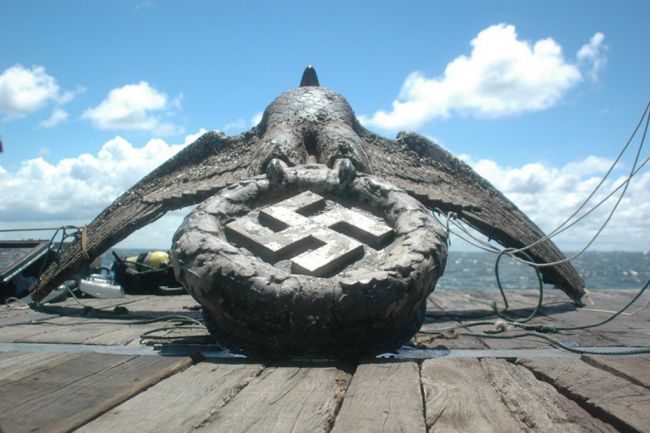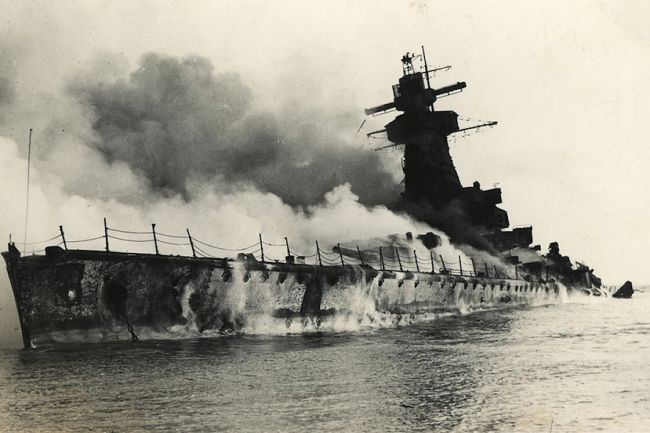Galleries
What to Do with Uruguay’s Massive Shipwrecked Nazi Bronze
A 700-pound bronze eagle perched atop a giant swastika.

A 700-pound bronze eagle perched atop a giant swastika.

Sarah Cascone

When a 700 pound bronze statue of an eagle perched upon a giant swastika sunk onboard Nazi battleship Graf Spee off the coast of Uruguay in 1939, it was thought to be lost forever. Following its recovery from the watery depths by local business man Alfredo Etchegaray in 2006, no one seems quite sure what to do with it, reports the Global Post.
The ship’s captain, Hans Langsdorff, scuttled the damaged vessel offshore outside the capital of Montevideo after the Battle of the River Plate after British intelligence tricked him into believing the Royal Navy was about to surround the ship. It burned for three days before finally sinking; Langsdorff killed himself shortly afterward.
The striking bronze symbol of the Third Reich, nearly nine feet wide, sat on the ship’s prow. The only other statue of its kind was on the warship Bismarck, which sunk in the north Atlantic in 1941.

The sinking of Nazi battleship Graf Spee on December 17, 1939, outside the port of Montevideo, Uruguay. Photo: AFP/Getty Images
According to Etchegaray, salvaging the Graf Spee wreck took 30 years and $5 million. The country’s supreme court has since awarded him 5o percent ownership of the piece, with the government retaining the rights to the other half. He is hoping for a return on his investment through selling or displaying the sculpture, but the government seems reluctant to do so. Uruguay may be particularly uneasy about the statue because many Nazi war criminals fled to South America following the war’s conclusion.
Etchegaray believes that his country is being pressured by Germany to keep the controversial piece out of sight. “Why shouldn’t it be displayed publicly, in an appropriate way, of course, with historical explanation?” he argued in an interview with the Global Post. “That’s what happens with the Roman Colosseum, with artifacts from the Khmer Rouge, with torture instruments used by the Inquisition.”
“If the government wants to bury this statue they have the right to do that, but we also have the right to get half the money for it,” Etchegaray added.
How Much Do They Want It?
Montevideo art dealer Jose Enrique Gomensoro is hoping to sell the businessman’s stake, which he expects is worth $15 million and has already received offers. While he assured the Global Post that finding a buyer won’t be a problem, “it’s very hard to say how much it will fetch. It could all depend on the whim of a single collector. How badly do they want it?”
William Rey Ashfield, a former head of the National Heritage Commission, thinks a $15 million price tag is way too high, but recognizes the unique value of the statue. “It could be a good attraction for a museum” he told the Global Post. “But it is a controversial piece that many people will also reject. It is a hot potato.”
“Really, the Uruguayan government should never have allowed any salvaging of the Graf Spee,” Rey Ashfield added. “But now that this statue is on dry land, I hope that an agreement can be worked out for it to be put on public display, but not in a triumphalist way, here in Uruguay. This is part of our history too.”
Rey Ashfield finds it unlikely that Germany is working to keep the piece off display but admitted “they would definitely be concerned at the possibility of a private sale leading to the statue falling into the hands of neo-Nazis or being used to glorify the Third Reich.”
Until a resolution can be reached, the statue is being stored in a Uruguayan navy warehouse.